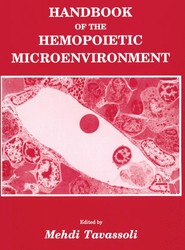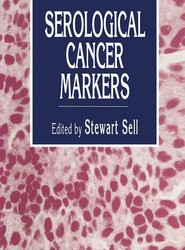(To see other currencies, click on price)
MORE ABOUT THIS BOOK
Main description:
Cancer has become the most critical health problem in the United States. It is expected that 25% of the people will develop this dread disease, and many of these will die from the malady. The causes of cancer are varied, but the best estimate available is that 70--90% arise from environmental factors. These statistics have triggered widespread governmental action along two lines: (l) An effort to identify those chemicals and conditions that give rise to malignant processes has been mounted by the Carcino genesis Testing Program, the National Cancer Program, and subse quently, the National Toxicology Program. (2) Regulatory laws have been enacted that are administered by agencies such as TSCA, FIFRA, EPA, FDA, OSHA, and so on, whose mission is to minimize public ex posure to carcinogens. Since direct verification that specific chemicals induce cancer in hu of unanticipated expo mans is necessarily limited to known incidences sure and is therefore rare, most chemicals are identified as carcinogens only by laboratory experiments. At present, the only accepted procedure is long-term animal bioassay, and not only are these studies expensive and time-consuming, but current worldwide resources permit the evalua tion of only 300-400 chemicals per year, a miniscule amount compared to what is available in the commercial world: 30,000 existing chemicals, with approximately 700 new such materials being introduced every year.
Contents:
I: The Fundamental Biology.- Section A: Mutagenesis and Other Short-Term Tests.- 1 An Overview of Short-Term Testing.- 2 Genetic Toxicology: Applications and Testing Strategies.- Applications and Testing Strategies.- References.- 3 Consequences of Genotoxic Effects.- Categories of Genotoxic Alterations.- Gene Mutation.- Definition.- Effects of Gene Mutation.- Mechanisms of Mutation Induction.- Nucleotide Substitution or Base-Pair Substitution (BPS) Changes.- Nucleotide or Base-Pair Additions and Deletion Mutations.- Operational Aspects Mutation Detection.- Effect of DNA Repair on Mutation.- Chromosome Aberrations.- Association of Genetic Effects with Human Disease.- Types of Mutations Found in Humans.- Dominant Mutations.- Recessive Mutations.- Polygenic Traits.- Chromosome Alterations.- References.- 4 In Vitro Cell Transformation: An Overview.- Test Origins and System Diversity.- The Transformed Morphology.- The Relation Between In Vitro Transformed Morphology and Cellular Malignancy.- The Response Characteristics of Balb/c-3T3, C3H/10T1/2, and SHE Cells Toward Chemical Carcinogen Treatment.- Problem Areas and Developmental Considerations.- Summary and Conclusions.- References.- 5 Lung Tumors in Mice.- Structure of the Lung.- Tumor Classification and Characteristics.- Natural Incidence; Age and Strain-Dependency.- Cell Proliferation.- Genetics of Lung Tumors.- Factors Influencing Lung Tumors.- Summary.- References.- 6 Tissue Genotoxic Effects.- References.- Section B: Carcinogenesis.- 7 Basic Principles of Chemical Carcinogenesis.- Classifications of Chemical Carcinogens.- Metabolism of Chemical Carcinogens.- Mechanisms of Carcinogenesis.- Molecular and Biologic Events Leading to Cancer.- Chemical Carcinogens That May Act by Epigenetic or Other Mechanisms.- Principles of Dose Response to Carcinogens.- References.- 8 Pathology of Toxic, Preneoplastic, and Neoplastic Lesions.- Definitions.- Pathogenesis of Cancer.- Tumor Pathology.- Natural Tumors in Different Species.- Chemically Induced Tumors.- A Classification of Toxic Nonneoplastic Lesions Induced by Chemicals.- Unique Toxic Lesions Induced by Carcinogens.- Toxicity and Carcinogenesis.- References.- 9 Carcinogen Bioassay Design.- References.- 10 Evaluation and Interpretation of Carcinogenesis Bioassay Results.- General Considerations.- Overview of Bioassay as Conducted.- Nature and Evaluation of Results.- Survival.- Growth, Feed Consumption, and Morbidity.- Pathology Findings.- Statistical Analysis.- The Evidence.- Strength of the Evidence.- Perspectives on the Findings.- Predictive Value of the Findings.- References.- II: Practical Carcinogenesis and Mutagenesis Assay Methodology.- Section A: Gene Mutation Assays.- 11 Bacterial Reverse and Forward Mutation Assays.- Theory and Background.- The Salmonella/Mammalian-Microsome Mutagenicity Assay (Ames Test).- Solubilizing the Test Material.- Dose Range Selection.- The Mutagenesis Assay.- Selection of Positive Controls.- Counting the Experiment.- Preincubation Methodology.- Applications.- The Escherichia coli Tryptophan Reversion Assay.- Forward Mutation Assays.- References.- 12 Yeast Assays in Mutagen and Carcinogen Screening.- Description of Selected Yeast Assays.- Tests to Detect Forward Mutation.- Tests to Detect Reverse Mutation.- Tests to Detect Mitotic Recombination and Mitotic Gene Conversion.- Test Method to Detect Aneuploidy (Chromosome Loss).- Summary.- References.- 13 Mouse Lymphoma Cell Assays.- Theory and Background.- The Thymidine Kinase Locus.- Test System Description.- Cell Preparation.- Treatment and Expression Period.- Selection of TK-/- Mutants.- Experimental Design.- Range Finding.- Preparation of Tube Cultures.- Preparation of S9 Mix.- Test Article Dilution and Treatment of Cultures.- Cell Culture Adjustment During the Growth Period.- Quantification of Toxicity.- The Mutagenesis Assay.- Preparation of Cultures, S9 Mix, and Treatment of Cultures.- Expression Period.- Cloning.- Enumeration of Colonies.- Data Evaluation.- Toxicity.- References.- 14 Chinese Hamster Ovary Mutation Assays.- CHO System.- Methods.- Indicator Cells.- Media.- Control Articles.- Negative Control.- Positive Control Article.- Dose Selection.- Treatment.- Assay Acceptance Criteria.- References.- 15 Drosophila Assay Systems.- Drosophila.- Sex-Linked Recessive Lethal Assay.- Test Characteristics.- Controls.- Statistical Analysis.- Data Base.- Repair Deficient Insects.- Methods.- Sex-Linked Recessive Lethal Test in Drosphila melanogaster.- Control Articles.- Culture Conditions.- Test Article Administration.- Solubility Testing.- Palatability and Toxicity Testing.- Fertility Testing.- Collection of Males.- Mating and Scoring.- Data Analysis.- Section B: DNA Damage and Repair Assays.- 16 Detection of DNA Damage and Repair in Bacteria.- E. coli DNA Repair Test.- B. subtilis Rec-Assay System.- Conclusions.- References.- 17 Mammalian DNA Repair Assays.- Theoretical Considerations.- DNA Repair Assays.- Data Base.- Methods.- Objective.- Materials.- Indicator Cells.- Medium.- Control Articles.- Dosing Procedure.- Dose Selection.- Collection of Hepatocytes.- Evaluation Criteria.- References.- Section C: Cytogenetic Assays.- 18 Cytogenetic Assays: Aberrations and SCE Techniques.- In Vitro Cytogenetics.- Stable Karyotype.- Growth in Culture.- Reproducible Generation Time.- Compatibility with an S9 Activation System.- Advantages and Limitations of In Vitro Cytogenetic Assays.- Methods for Chromosome Aberration Analysis.- Medium and Cell Cultures.- Test Compound.- Control Articles.- The Metabolic Activation System.- Toxicity and Dose Determination.- Cell Treatment.- Staining and Scoring of Slides.- Evaluation Criteria.- Methods for SCE Induction.- Sister Chromatid Exchange.- Medium and Cell Cultures.- Test Compound and Control Articles.- Solvent Controls.- Positive Controls.- Toxicity and Dose Determination.- Cell Treatment.- The Metabolic Activation System.- Staining and Scoring of Slides.- Evaluation Criteria.- Data Bases.- Overall Assessment.- References.- Section D: Transformation Assays.- 19 In Vitro Transformation Assays Using Mouse Embryo Cell Lines: Balb/c-3T3 Cells.- In Vitro Transformation of Balb/c-3T3 Cells.- Materials and Methods.- Cell Culture Methodology.- Reagents.- Balb/c-3T3, 1-13 Cell Culture.- Experimental Design.- References.- 20 In Vitro Transformation Assays Using Mouse Embryo Cell Lines: C3H/10T1/2 Cells.- In Vitro Transformation of C3H/10T1/2 Cells.- Materials and Methods.- Cell Culture Methodology.- Reagents.- 10T1/2 Cell Culture.- Experimental Design.- References.- 21 In Vitro Transformation Assays Using Diploid Syrian Hamster Embryo Cell Strains.- In Vitro Transformation of Syrian Hamster Embryo Cells.- Materials and Methods.- Animals.- SHE Cell Primary Preparation.- Reagents.- SHE Cell Culture.- Experimental Design.- References.- Section E: Short-Term In Vivo Carcinogenesis Assays.- 22 Lung Tumor Assay.- Rationale of Assay.- Basic Lung Tumor Test.- Open Questions.- Limitations and Sources of Error.- Advantages of the Assay.- Conclusion.- References.- 23 Tissue Genotoxic Effects: Methods.- Alkaline Sucrose Gradient Analysis of DNA Fragmentation and Repair.- The Alkaline Elution Assay.- Unscheduled DNA Synthesis (UDS).- DNA Adduct Analysis.- Chromatid Aberrations.- Micronuclei Introduction.- Sister Chromatid Exchange.- Sperm Anomaly Test.- Specific Locus Mutations.- Induction of Resistant Preneoplastic Liver Cells.- References.- Section F: Conduct of Carcinogen Bioassays.- 24 Conduct of Carcinogen Bioassays.- References.
PRODUCT DETAILS
Publisher: Springer (Humana Press Inc.)
Publication date: October, 2011
Pages: 338
Weight: 545g
Availability: Available
Subcategories: Pathology
From the same series















